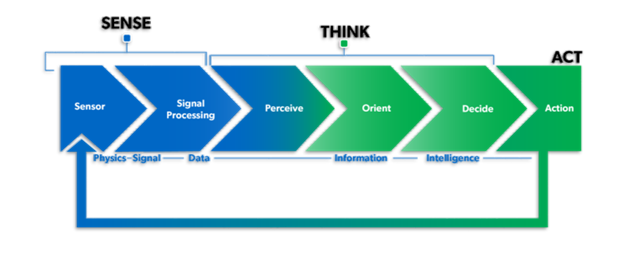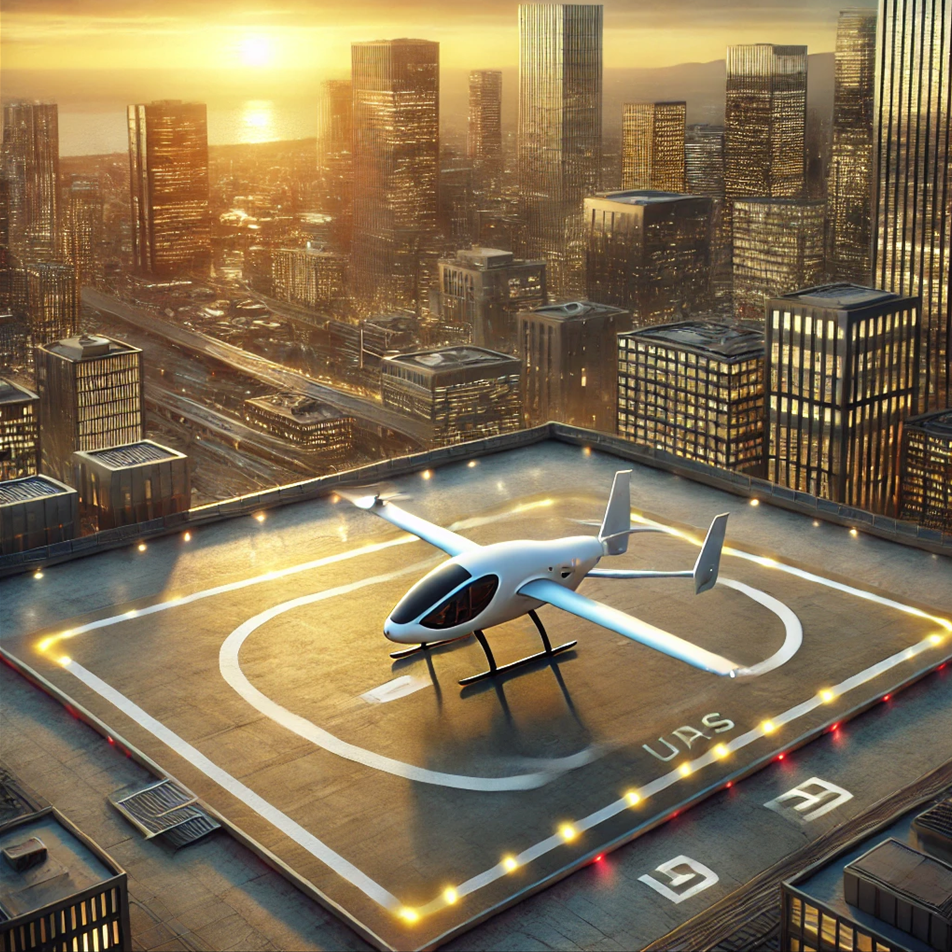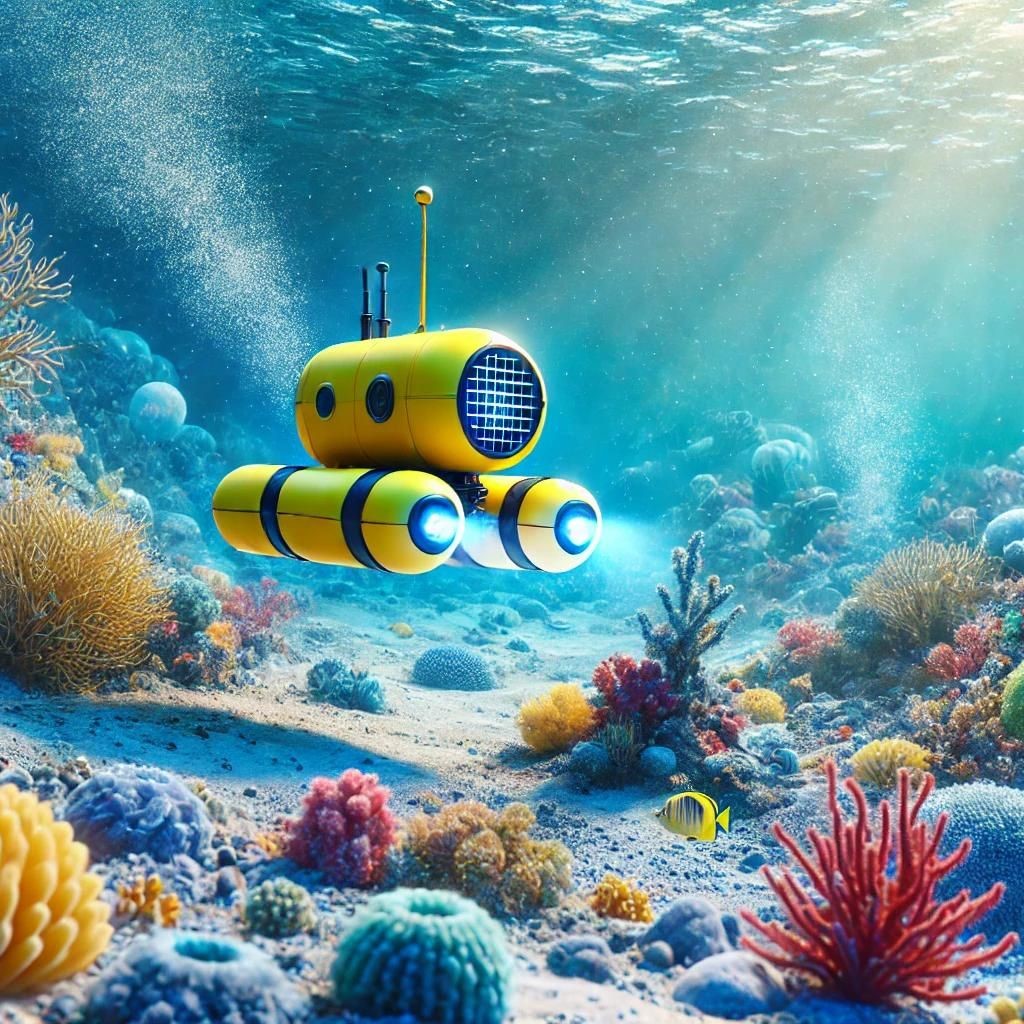Autonomy
The Autonomy Research Institute (ARI) at Texas A&M University-Corpus Christi (TAMUCC) is dedicated to pioneering advancements in autonomous systems across air, land, water, and space. Building upon our established expertise as a FAA-designated Unmanned Aircraft System (UAS) Test Site and in UAS Traffic Management (UTM) and Advanced Air Mobility (AAM), ARI is expanding its applied research to encompass a full spectrum of autonomous system challenges. Through collaboration with academia, industry and government, we are committed to creating a future where intelligent machines seamlessly integrate into society.

Levels of Autonomy
Autonomy exists on a spectrum, ranging from minimal to full independence . Systems can operate with varying degrees of human oversight, from requiring constant human intervention to performing tasks entirely independently. This spectrum often aligns with the concept of "sense, think, act": the ability to perceive the environment, process information, and make decisions accordingly. While some applications demand complete autonomy, others may benefit from a hybrid approach, combining human expertise with machine intelligence for optimal performance and safety.
Autonomy in Different Domains
Autonomy, defined as the ability of systems to operate with varying degrees of independence from human intervention, is at the core of ARI’s mission and vision. ARI is dedicated to advancing the capabilities of uncrewed systems (UxS) across air, land, water, and space. The level of autonomy required for a platform or system varies based on the specific application or mission, ranging from partial to full independence.
In the air, UASs will perform flight tasks and integrated into the National Airspace System (NAS) via an AAM system independently. Various task such as air taxi, delivery, surveillance, agriculture, and search and rescue will be automatic and with little human intervention.
On land, Autonomous Ground Vehicles (AGVs) will include self-driving cars/trucks, robots, and drones that can operate on land with or without varying degrees human control, used in transportation, logistics, police, fire, and agriculture applications. AGVs hold the potential to transform transportation, enhance mobility for those with disabilities, and improve the safety and efficiency of industrial operations.
In the water, Autonomous Underwater Vehicles (AUVs) and Unmanned Surface Vessels (USVs) are reshaping marine operations. AUVs excel at underwater exploration, data collection, and inspections, capable of operating independently to gather critical oceanographic information. USVs, capable of extended deployments, complement these efforts by conducting surface-based tasks and environmental monitoring. Together, these autonomous platforms are expanding the boundaries of oceanographic research and commercial maritime activities.
Autonomous vehicles in space can perform a variety of tasks otherwise improbable due to financial constraints, from suborbital data collection to orbital imagery. ARI's applied research and development, and testing of these autonomous systems will pave the way for innovative applications that enhance productivity, safety, and sustainability across various sectors.

Air
Autonomous Unmanned Aircraft Systems (UAS or drones) have a wide range of applications:
- Transportation: Provide passenger transportation services for range and medium range flights across urban and rural areas.
- Commercial: Delivery, package transport, aerial photography, agriculture (crop monitoring, spraying), and infrastructure inspection.
- Public Safety: Search and rescue, disaster relief, firefighting, law enforcement, and border patrol.
- Scientific Research: Meteorology, climate studies, wildlife monitoring, and environmental monitoring.
Essentially, any task that can be performed from the air can potentially be done at the right level of autonomy by a drone.

Land
Autonomous vehicles on land, known as self-driving cars or Autonomous Ground Vehicles (AGVs), can perform the following tasks:
- Transportation: Provide passenger transport services (taxis, ride-sharing), deliver goods (packages, groceries), and transport people with disabilities.
- Logistics: Optimize delivery routes, reduce traffic congestion, and improve supply chain efficiency.
- Agriculture: Automate tasks like planting, harvesting, and livestock monitoring.
- Construction: Transport materials, operate heavy machinery, and perform site inspections.
- Mining: Transport materials, operate heavy equipment, and improve safety in hazardous environments.

Water
Autonomous vehicles in water, categorized as Autonomous Underwater Vehicles (AUVs) and Autonomous Surface Vehicles (ASVs), can perform a variety of tasks. These include:
- Exploration: Mapping ocean floors, discovering new species, and studying underwater ecosystems.
- Data collection: Gathering oceanographic data, such as temperature, salinity, and currents.
- Inspection: Examining underwater infrastructure, like pipelines and offshore platforms.
- Search and rescue: Locating and rescuing people or objects in water.
- Commercial applications: Delivering goods, ocean farming, and environmental monitoring.
- Public operations: Oil spill clean-up, policing actions.
Shaping the Future
The potential of autonomous systems to revolutionize industries and improve lives is immense. By exploring the full spectrum of air, land, water, and space, the Autonomy Research Institute is at the forefront of unlocking this potential. Our commitment to groundbreaking research, coupled with a focus on practical applications, will shape the future of autonomous systems and its seamless integration into society.